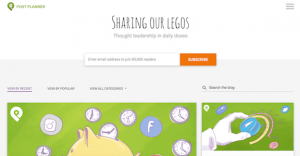Turnover is a costly problem for just about any organization. When a person leaves, others have to pick up the slack, then there is time spent finding and interviewing a replacement. And then that person needs to get up to speed, which can take months. According the Society for Human Resources Management (SHRM), the cost of replacing an employee ranges from 90 to 200% of annual salary[i]. Our research shows employees consider their development more important than a raise[ii]. What sort of learning might help? Looking across Saba’s customers, I found three excellent case studies:
Onboard properly. According to the Aberdeen Group, 86% percent of new hires decide to stay or leave a company within the first six months and they are 69% more likely to stay more than 3 years if they experience a well-structured onboarding program[iii]. Onboarding is a combination of paperwork, formal and social learning, and if you want to have a positive effect on retention, my advice is to get the paperwork out of the way as quickly as possible and focus on the learning aspects.
Train your managers to coach. People are promoted to manager because they do their job well, but the new role is quite different –it’s getting things done through his or her team. A few managers know this intuitively, but most need some instruction and practice to be proficient at building trust, listening, and effectively delivering praise and feedback. The good news here is that coaching training is only a modest investment of time and money.
Facing a wave of employees reaching retirement age, the City of Houston revamped their performance process, which they refer now to as HEAR. The acronym sounds a lot more employee friendly than the program’s name (Houston Employee Assessment and Review) and points to a key elements of the program’s success: training managers to listen and coach their teams. HEAR has been quite a success both in improving employee morale and performance as well as creating a positive city culture, and has been a model for similar programs, including Los Angeles Country’s CLEAR.
Enable self-directed development. Many of your employees will want to develop their skills, often on their own time. What is your organization doing to encourage this? It can take on many forms, from internal social groups where you encourage people to view, discuss and share content to a learning catalog that features formal and informal learning.
Jazz Pharmaceuticals has invested significant resources in on-demand learning, both internally developed and purchased content, such as getAbstract. The company has grown largely through acquisition, so there has been a critical need to get the new employees up to speed. But the training provides more than just knowledge transfer, it also helps with employee retention. Voluntary turnover at acquired companies is often 2 to 3 times the industry norm, yet Jazz Pharma has kept their attrition at or below the industry benchmark, a fact that CLO Erik Fink attributes this to their strong learning culture which draws on a rich catalog of on-demand learning.
Of course, onboarding, coaching and self-directed learning are not the only ways Learning can help engage and retain your co-workers, there are many others. What’s important is that employees feel like they are growing their skills and careers. One final point, not only is it important provide employees with development opportunities, but it’s just as important to make sure they know their options.
[i] SHRM. “Guide to analyzing and Managing Employee Turnover.” Page 3.
[ii] Harris Poll on behalf of Saba. “Saba Retention and Leadership Survey.” March 2015.
[iii] Willyerd, Karie, Harvard Business Review. “Social Tools can Improve Employee Onboarding.”
Business & Finance Articles on Business 2 Community(54)





